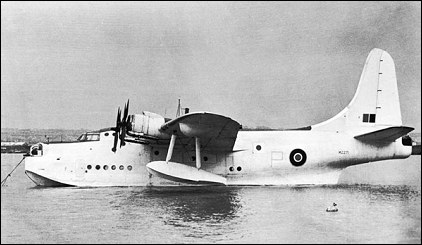 |
Short S.45 Seaford1946 |  |
| FLYING BOAT | Virtual Aircraft Museum / United Kingdom / Short |
 |
For service in the Pacific the Air Ministry required a more powerful, more heavily armed flying boat than the Short Sunderland, and specification R.8/42 was met by a new Short design, known originally as the Sunderland V but later renamed Seaford, with the company designation S.45. Gross weight rose to 34000kg and a number of structural improvements were incorporated to compensate for this; these included a strengthened wing and enlarged horizontal tail surfaces. The hull was also modified, its beam being increased by 0.99m. Armament comprised two 12.7mm machine-guns in a Brockhouse turret in the bow, and two 7.7mm machine-guns in the nose decking. Two 20mm cannon were mounted in a Boeing B-17 dorsal turret, and the Martin tail turret contained a pair of 12.7mm guns, two more of which were located in beam positions. A bomb load could also be carried in a fashion similar to that of the Sunderland. The first of two prototypes, powered by four 1253kW Bristol Hercules XVII engines, was flown on 30 August 1944 and 30 production aircraft, with 1283kW Hercules XIXs, were also ordered. Of these only six were completed. In April and May 1946 No.201 Squadron carried out operational trials with the Seaford, in co-operation with the Marine Aircraft Experimental Establishment at Felixstowe, but the programme was cancelled and the completed machines were converted as 39-passenger aircraft for BOAC, acquiring the designation Solent 3. A seventh Solent 3 was a conversion of the second production Seaford, which had been evaluated by BOAC in 1946, leading to an order for 12 30-passenger Solent 2s which was delivered in 1948.
|  COMPANY PROFILE | |||||||||||||||||||||||||||||||||||||||||||||
 |

|

